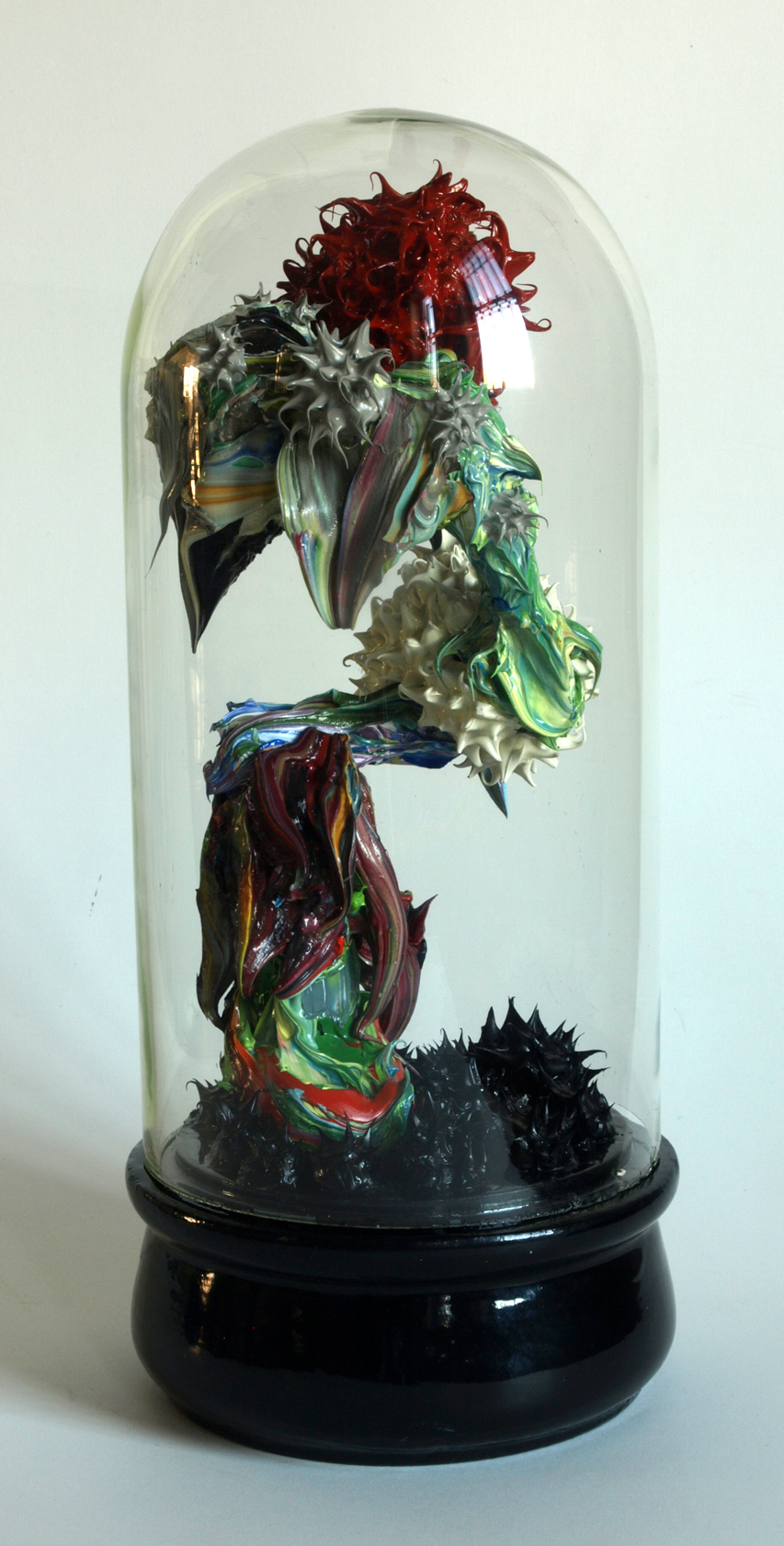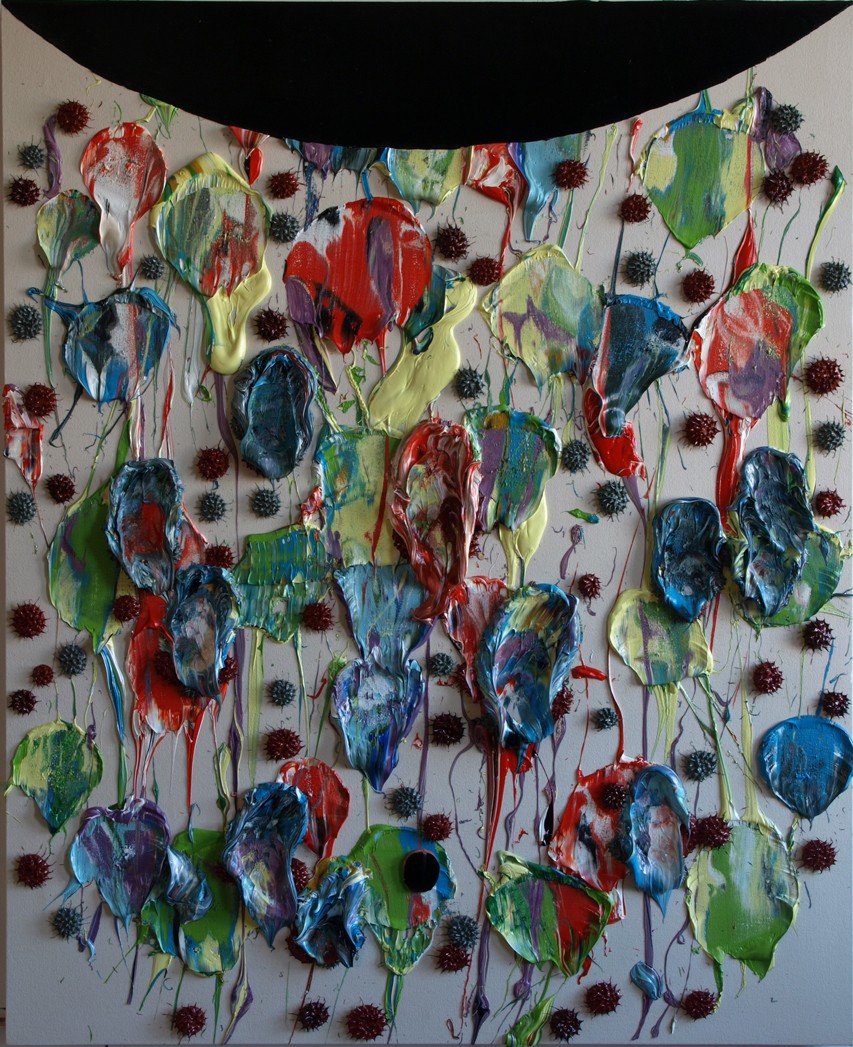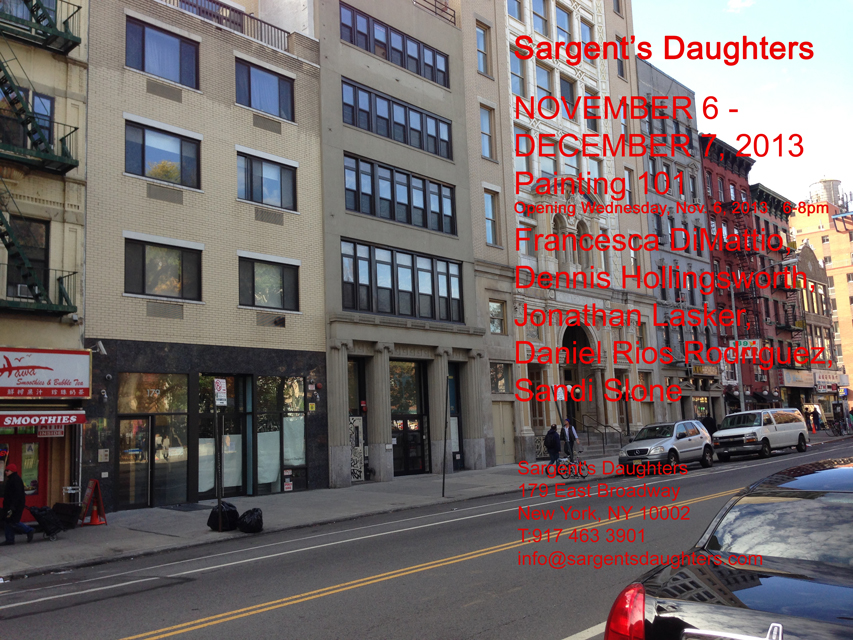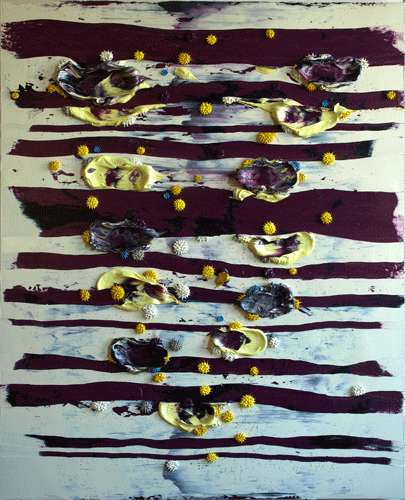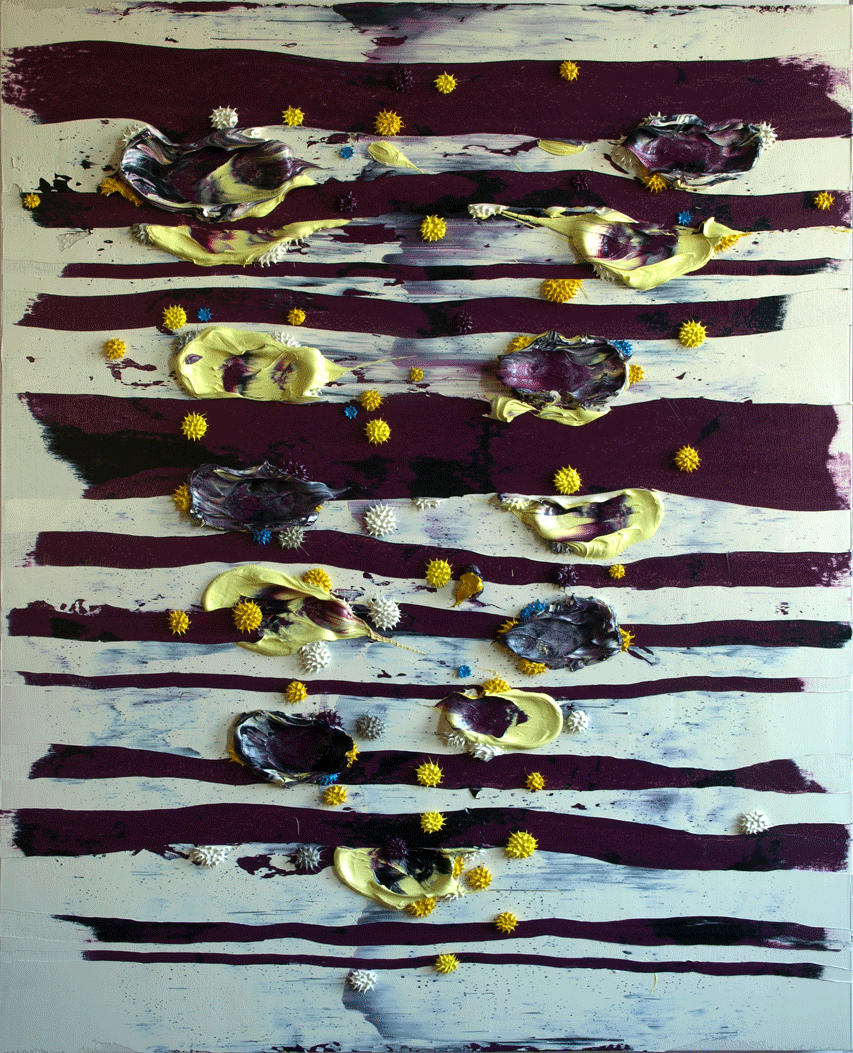November 28, 2013
NYC DriveBy
As I ride my scooter between Manhattan and Brooklyn, I see homies on motorcycles, most times singly, sometimes in groups. They can act outlaw sometimes, but from what I've seen, it's not much more than what passes for normative NYC car drivers and a lot less outlaw than how bicyclists ride. At the stop light, I nod at eye contact, from coast to coast, there's a brotherhood of two wheeled vehicle riders regardless of the number of cubic centimeters between your legs. I get a nod in return from the homies. Their style is hard, hard like they don't care, harder and more raw in contrast to the stylization of leather clad rock and roll aspirant vapor of most Harley riders. Nazi storm trooper helmets abound, and there is little else that bears a unique fashion signature apart from stand issue Hip Hop apparel.
There is a recent incident in the streets of NYC that has inflamed the news and the reputation of local biker culture. I won't go into depth with a description here, let this link suffice. What I think is central to this story is the rival interpretations of the violent gang versus the spontaneous expression of homie camaraderie. There have been calls for the creation of local dirt bike parks in the city and the critical response ranges between outright repression to Robert Moses style provisions to expressions of futility that they wouldn't be used after all.
Local radio host and news analyst John Bachelor interviewed Sara Maslin Nir about her NYTimes article For New York City's Dirt Bikers, There Is No Place to Ride. In the interview, she referred to youtube videos that you can find by searching with terms like Bike Life, Go Hard Boys and Harlem Legends. I've sampled a few below...
November 25, 2013
Vitrine

The Mercurial and the Brave
#436
2013
10.5"x5"diameter

Vitrine
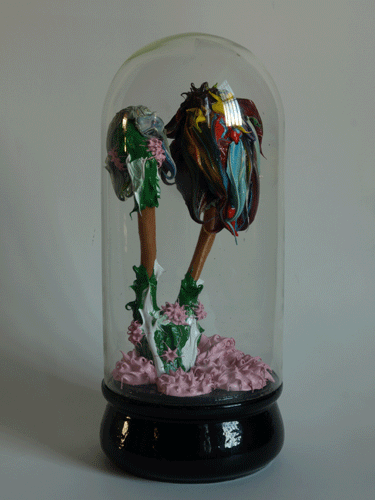
Olympos, the home of the gods
#435
2013
10.5"x5"diameter

DH @ TKG @ Hikari @ Shibuya

Tomio Koyama Gallery is hosting a solo exhibition of my paintings from 4th to 16th December, 2013 at the TKG space in Shibuya. It is located on the 8th floor of the department store "Hikarie", which is directly connected to Shibuya Station.
Mark your calendars!
November 24, 2013
Vitrine
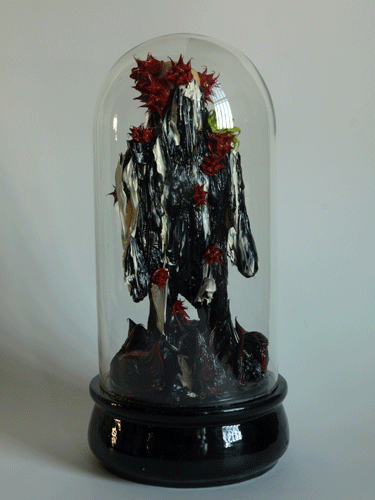
The Dialectics of Zeno
#433
2013
10.5"x5"diameter
The hyperlinked title was connected with Zeno's arrow converging on the target of figuration. We stretch the bow and release but Zeno's world, the arrow never arrives as there is always a rational interval to parse.
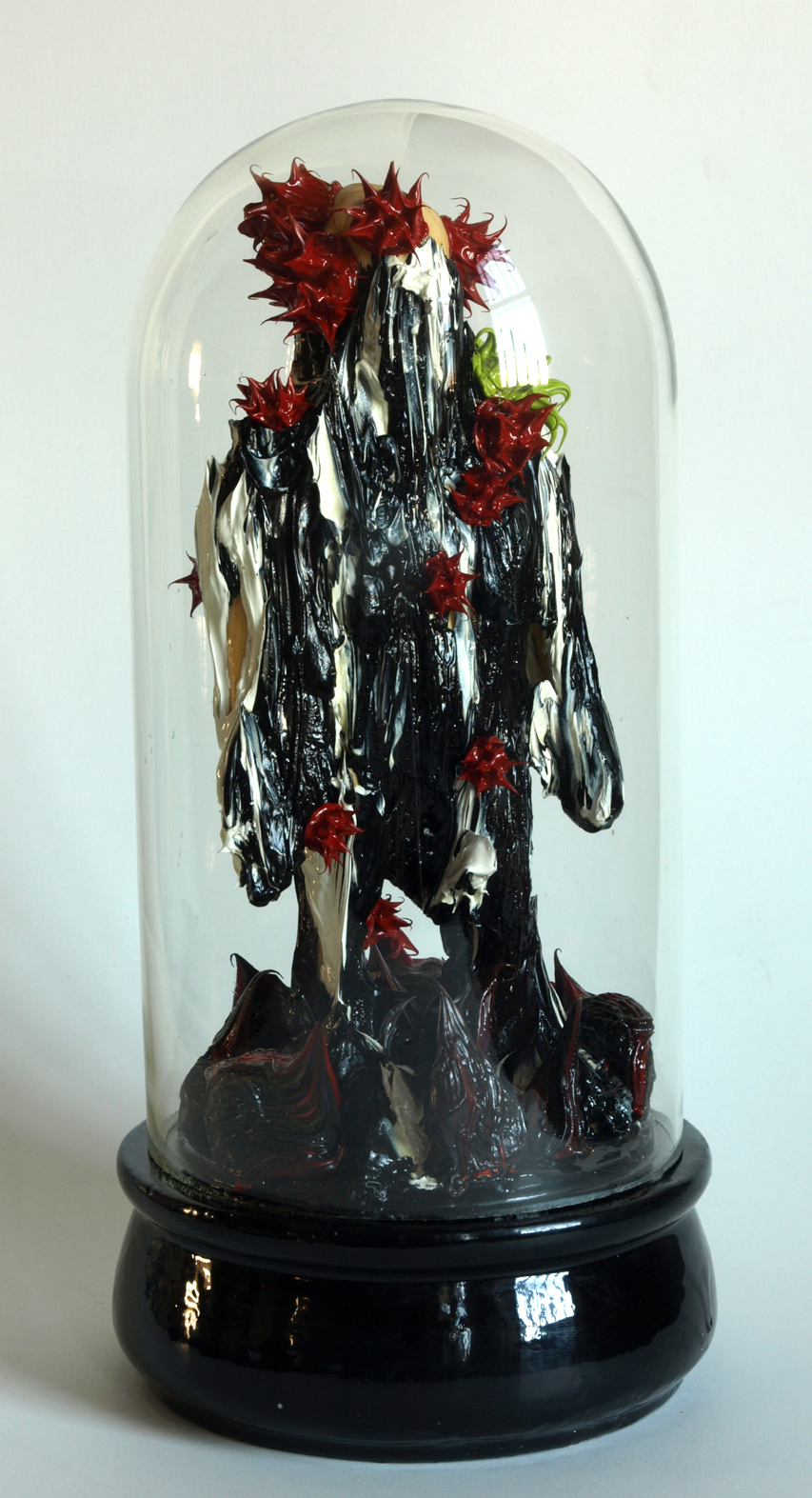
Coming of Age (an Eternal Recurrence)
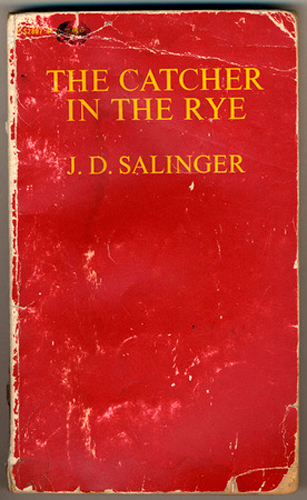
High schoolers need a new Catcher in the Rye. Luckily David Mitchell wrote one by Jessica Roake, I thought that this is a spark of the generational critique that I had felt should have sprouted around the fall of the Berlin Wall (1989) and the end of the Cold War. This historical moment marked the end of the 20th century and the beginning of the 21st, about ten years before the calendar's mark and I reckon that we've been running on the fumes of Cold War aesthetics still to this day.
I've snipped, bolded and colored the portions of Roake's article that indicate a possible criteria for an epoch we have already begun to live into:
[I] imagined it so differently. I would hand The Catcher in the Rye to my students and watch it transform their lives. They would see themselves in Holden Caulfield, and J.D. Salinger's words would elucidate their own frustrations and struggles. They would write righteous screeds against phoniness, start keeping journals, and forever treasure their pored-over paperback. The book would blow the minds of teenagers seeking a pilgrim soul--a friend's voice in the wild of adolescence.What I did not expect was shrugging boredom, the most feared of student reactions. I might as well have assigned Jude the Obscure.
The problem is that Catcher in the Rye is no longer a book for cool high school students. Catcher in the Rye is a book for cool high school teachers. Holden's painful, alienating realization--that in life, phonies abound and beauty is a fragile, horrible thing we will forever chase and lose--is a fundamental teenage anguish. Adults who remember this feeling share the book to say: I understand that this world hurts. Here is someone else who understands. Assigning Catcher in the Rye has long been an acknowledgement that the moody sensitivity of teenagers is actually-- despite its insufferability to older people--the correct reaction to the world.
Unfortunately, the book's reputation as the Great American High School Novel precedes it, and its popularity has been its undoing. According to Stephen J. Whitfield, author of a social history of Catcher,Salinger's once-shocking novel "may lag behind only Of Mice and Men on public-school required reading lists." Young readers need a new coming-of-age classic, a book that has yet to be discovered and co-opted by the culture, a book that shares Salinger's sense for adolescent heartbreak and anger while refreshing its midcentury references and voice, a jewel of a book that could feel like new. Happily, such a book has already been written: David Mitchell's 2006 coming-of-age novel Black Swan Green.
[snip]
Enter Black Swan Green. To readers familiar with the epic scope and ambition of Cloud Atlas, Mitchell's most famous novel (and the basis for the movie), Black Swan Green is radical in its simplicity. While Cloud Atlas is all wild acrobatic feats of genre and voice and puzzles and mysticism, Black Swan Green is earthbound. Jason Taylor, its narrator, is a sensitive young stutterer and secret poet in Thatcherite England who recounts the personal revolutions of his 13th year.
There are clear nods to Catcher in the Rye in Black Swan Green. The sensitive boy at odds with his surroundings, personal and cultural shifts that both seduce and repulse the narrator, an idiosyncratic first-person perspective--Salinger's stamp is clear in Mitchell's novel, as it is in most coming-of-age novels written in the post-Holden era. But Mitchell pulls off the neat trick of providing the same emotional connection readers remember about Catcher in the Rye in a way that feels fresh and undiscovered. Through a shift in context, voice, and protagonist, Mitchell is able to elevate a very simple, classic coming-of-age story to the realm of greatness.
But it isn't as simple as updating the references. After all, like Catcher in the Rye, Black Swan Green is dated, and the slang and particularities of England in the '80s ("aces," the Falklands War, Adam Ant) take a bit of time to explain to young Americans. And it's still set in the privileged world of white boys (there are many great choices that broaden this perspective, among them Drown by Junot Diaz). But while it's set 30 years ago in a pre-Internet world, BSG, with its TV, pop music, movies, and suburban boredom, feels far more current.
More importantly, Jason is not just a contemporary kind of protagonist-- he's most decidedly not a Holden. As young David Mitchell was, Jason is a budding writer embarrassed by his sensitive literary proclivities and deeply ashamed of his stutter, an observer who wants to understand and belong to the world around him. Holden's cynicism and alienation from the world he inhabits have become a cliché; the sincerity and openness of young Jason feels fresh. He reads as real and naive, as immature as Holden is jaded. Instead of finding almost everything "sad as hell," Jason remains childlike in his enthusiasm for all the "epic" things around him, even as the events of his life become harder for him to process.
Both Holden and Jason are sharp observers of the cruel hierarchies and divisions in their worlds. "You ought to go to a boys' school sometime," Holden tells his shallow girlfriend Sally. "Everybody sticks together in these dirty little goddam cliques. The guys that are on the basketball team stick together, the Catholics stick together, the goddam intellectuals stick together, the guys that play bridge stick together. Even the guys that belong to the goddam Book-of-the-Month Club stick together." The critique here is certainly a timeless one, but the references make it seem antiquated. Kids played bridge?
Jason spends most of Black Swan Green observing and untangling the same kinds of adolescent caste systems that Holden pillories. But Jason's voice feels timeless, specific, and poetic at once:
Picked-on kids act invisible to reduce the chances of being noticed and picked on. Stammerers act invisible to reduce the chances of being made to say something we can't. Kids whose parents argue act invisible in case we trigger another skirmish. The Triple Invisible Boy, that's Jason Taylor. Even I don't see the real Jason Taylor much these days, 'cept when we're writing a poem, or occasionally in a mirror, or just before sleep. But he comes out in the woods. Ankley branches, knuckly roots, paths that only might be, earthworks by badgers or Romans, a pond that'll ice over come January, a wooden cigar box nailed behind the ear of a secret sycamore where we once planned a treehouse, birdstuffedtwigsnapped silence, toothy bracken, and places you can't find if you're not alone.Jason has breathtaking little turns of phrase throughout the novel, and he considers larger questions of art, justice, love, and death in profound ways. Mitchell stays true to the youth of his protagonist, though, and always grounds us when the narrative seems to be floating toward Cloud Atlas territory. Jason may be an extremely smart, thoughtful boy, but he is also a boy, and Mitchell's humor and pitch-perfect evocation of school dynamics keep the story from feeling false.
While both narrators are sensitive, Holden seeks to break with the constraints of his family, school, and small, phony world; Jason, on the other hand, spends most of BSG trying desperately to make his world fit together. He is full of unguarded, unabashed love for those around him, and Mitchell lets him show the vulnerability that Salinger buries under Holden's posturing. And as an added bonus, girls--long turned off by the complete lack of female characters with dimension, motivation, or depth in Catcher--get to be the most heroic characters of the book: a brilliant older sister, a mother awakening to her strength, an eccentric émigré countess (a character from Cloud Atlas), and girls powerful and terrifying in equal measure.
A harvest of criteria for a new age:
radical in its simplicity
childlike in enthusiasm for all
places you can't find if you're not alone
trying desperately to make the world fit together
unguarded, unabashed love
show the vulnerability
powerful and terrifying in equal measure
November 23, 2013
Intermission (Cluck Old Hen)
My old hen's a good old hen
She lays eggs for the railroad men
Sometimes 8 and sometimes ten
That's enough for the railroad menCluck old hen cluck and sing
You ain't laid an egg since late last spring
Cluck old hen cluck and squall
Ain't laid an egg since late last fallCluck old hen cluck when I tell you
My old hen she's a good old hen
Cluck old hen or I'm gonna sell you
Last time she cackled cackled in the lot
Next time she cackles cackle in the pot
She lays eggs for the railroad men
Sometimes 1 sometimes two
Sometimes enough for the whole damn crew
November 17, 2013
James Kalm Visits Painting 101's opening at Sargent's Daughters
November 11, 2013
November 5, 2013
Without Truth, There is Only Power
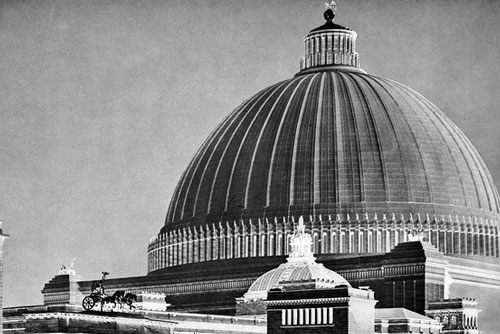
I am an artist. I am also an architect. I designed my education by substituting an an undergraduate degree in architecture for an undergraduate degree in art. I pursued this course to a hard won architectural license in order to drive a piton into the face of architecture before I completed my elaborate educational plan and entered graduate studies in art proper.
It was in that formative phase of architectural education that I first formulated an vision of urbanism that I called Parallel Cities, and which carried in it the seed of an idea of complimentary hybridity that I have conjured again and again in other realms. In painting, I seek to reconcile the poles of abstraction and representation by evoking the image of a compass whose ordinates work together to guide an exploration into the world of paint applied to support. In politics, I endorse the center by seeking a fusion of the best aspects of the Right and Left. In Art, I seek to reconcile the twin aspects of theory and practice.
So it was that I wrote a blogpost, stung by a searing critique of an architectural hero in the figure of Leon Krier. Michael Z. Wise blasted Krier on the occasion of the publication of his book Albert Speer, Architecture. Krier replied in my comments and I didn't read those comments until several months later (I fell out of the habit of reading comments after many years of a broken comment engine in this blog, since repaired). I was taken aback. I thought that perhaps I had blindly piled onto the condemnation of Krier's attempt to rehabilitate the architectural efforts of Albert Speer without reading the source materials. I then sent an email to Michael Z. Wise for his response to Krier's defensive comments. Wise wrote back tersely:
Dear Mr. Hollingsworth,My review speaks for itself.
Best wishes,
Michael Wise
So I began my research in earnest, reading as much as I could online about Albert Speer (examples here and here, here) and Michael Z. Wise. I've also ordered Krier's book on Speer, it has yet to arrive in my mailbox. I struck the title of the original blogpost.
What follows are a few steps into the labyrinth.
Dear Mr. Wise:Back in April of this year, I wrote a blogpost on your article "Hitler's Words Into Stone", which I titled "Please Feel Guilty, Leon":
http://www.dennishollingsworth.us/archives/002899.html
To my surprise, Mr. Krier had replied twice with comments to my blogpost, which I have pasted below.
I'm curious as to your response to his defense that:
1) He had framed his remarks in a way as to critique "the scandalously selective process of denazification", in essence saying that his words and ideas had been taken out of context.
2) He was fully aware of Speer's culpability in the clearing of Jewish properties in Berlin in 1938 and he did not exculpate Speer.
3) He is not a crypto-fascist, and this accusation conceals a confusion of the distinctions and affinities between classicism and modernity.These are hot labels: dishonesty and proto-fascisicm. Personally, I think that it is probable -certain, even- that this dispute has arisen from the limitations of human perspective and that both of you have acted intellectually in good faith. My philosophical predilection is to identify polar opposites and celebrate their complimentary nature and this is how I think I will probably handle my follow up to my original blogpost.
I appreciate your attention in this matter, in advance. These are extremely hot topics, and my interest here is primarily about increasing clarity, comity and understanding. I intend to write a subsequent blogpost addressing Mr. Krier's reply and I could not begin until I had sent you this query.
Sincerely,
-Dennis Hollingsworth***
Leon Krier | July 22, 2013 3:44 AM |
Riposte to Michael Z. Wise - Hitler's Words into Stone- Wall Street Journal 12 April 2013
My introduction to the Architecture of Albert Speer contains a fable designed to lay bare the scandalously selective process of denazification, that led the US Army in 1945 to employ Wernher Von Braun, the Nazi rocket engineer and criminal slave master. Mr Wise quotes my sentences without explaining their fictional nature. His is a dishonest procedure, designed to confuse the reasons for debating the questions," Can a war-criminal be a great artist?" and "Why was Classicism banned since the allied victory and not Modernism, Science and Technology, Socialism and Engineering, all of which sustained the Nazi terror and war machine more ominously than Hitler's mostly unbuilt classical architectural and urban projects.
The criminal involvement of Speer in clearing Jewish properties in Berlin in 1938 were first revealed, not by Susanne Willems in 1988, as Michael Wise erroneously states, but by Matthias Schmidt's in "Albert Speer; The End of a Myth" in 1981. Mr Wise insinuates my ignorance of revelations that are fully credited in my book of 1985 and in the 2013 reprint. It is those revelations that, in my opinion, killed Albert Speer. His bluff had finally been called.
Mr Wise holds me to be "no crypto-fascist." Thank him but neither do I hold a principled aversion to modernism as he states. I am merely allergic to bad design for which architectural and artistic modernism have become the unequalled world champions. Michael Wise quite simply cannot conceive of the possibility that a criminal can be a great artist, nor that a classical architect practicing today is part and parcel of modernity. Those all too common preconceptions are wrong. Classicism and modernity are not contradictory terms, suffice to consult a dictionaryDear Mr Hollingworth,
leon krier | July 22, 2013 3:53 AM |
Instead of commenting Mr Wise's manipulative comments, you should read the texts I wrote about Speer explaining also the reasons for dealing with the unsavoury subject.
Then I would be interested to respond to your comments and questions.
Best regards
Leon Krier
***
Krier prompts some important questions:
-Can a war-criminal be a great artist? Can an artist's oeuvre be condemned by his character, the strength or weakness of his moral constitution? Wise pulled short of this position. This topic has not be settled yet in our time. Writers today regularly pause to reflect on the works of Leni Riefenstahl and even Polanski.
-Is there redemption, even for a Nazi?
-What about Krier's assertion that there were scores of former (?) Nazi scientists drafted by the USA and associated Allies after the war? If their hands aren't clean then what about the whole nation of Germany of that time and even thereafter?
-Why has Classicism and tradition have to bear the stains of reactionary taste, just because a Hitler or a Stalin endorsed and mandated it? Is there no knowledge that can be transmitted through the generations because we are condemned to live in an eternal modern NOW?
-What is a fascist? Wikipedia defines it as a form of radical authoritarian nationalism. It is an epithet tossed about too freely in this day. To Wise's credit, he pulls back from this as Krier clearly acknowledges. But the word hangs heavy in the air, and finally it was Krier who had pulled up adjacent to it. If Krier wanted to make the case for Classicism, why use Speer at all? Wise put it well: "...there were far more accomplished early 20th-century neoclassicists than Speer, among them Edwin Lutyens, John Russell Pope and Paul Cret." I tend to think now that it was a blunder for Krier to go there, but then I have to hold any judgement in abeyance until I actually read his book.
In the meantime, here is a good capsule history of this subject, Gilbert King for the Smithsonian Magazine Blog: Candor and Lies of Nazi Officer Albert Speer
In September 1945, Speer was informed that he would be charged with war crimes and incarcerated pending trial at Nuremberg, along with more than 20 other surviving members of the Nazi high command. The series of military tribunals beginning in November 1945 were designed to show the world that the mass crimes against humanity by German leaders would not go unpunished.
As films from concentration camps were shown as evidence, and as witnesses testified to the horrors they endured at the hands of the Nazis, Speer was observed to have tears in his eyes. When he took the stand, he insisted that he had no knowledge of the Holocaust, but the evidence of slave labor in his factories was damning. Speer apologized to the court and claimed responsibility for the slave labor, saying he should have known but did not. He was culpable, he said, but he insisted he had no knowledge of the crimes...
...A quarter-century after his death, a collection of 100 letters emerged from his ten-year correspondence with Helene Jeanty, the widow of a Belgian resistance leader. In one of the letters, Speer admitted that he had indeed heard Himmler's speech about exterminating the Jews. "There is no doubt--I was present as Himmler announced on October 6 1943 that all Jews would be killed," Speer wrote. "Who would believe me that I suppressed this, that it would have been easier to have written all of this in my memoirs?"
***
An excellent related article by Wise is worth reading by the way: Did Hitler's Architect Know the Plan? A closer look at Albert Speer's role in the Third Reich
Here are the first three and the last three paragraphs:
Soon after Albert Speer began serving a 20-year sentence for war crimes, he made a soul-searching request to the chaplain at Spandau prison. "Would you help me become a different man?" Hitler's former architect and armaments minister asked George Casalis, a Protestant cleric who fought against the Nazis in the French Resistance. The chaplain did his best to comply. Eventually he concluded that Speer was "the most guilt-ridden, the most tortured man I have ever known. By the time I left Spandau," Mr. Casalis told writer Gitta Sereny, "I saw him as the most repentant."Following his release in 1966, Speer repeatedly accepted a general responsibility for Nazi atrocities and spoke of being haunted by the Holocaust. But he steadfastly refused to admit he had known Jews were being killed while he served his Führer, just as he denied awareness of the horrendous maltreatment of millions of slave laborers under his own control.
That such a high-ranking official was uninformed about the fate of European Jewry seemed incredible. So despite Speer's avowed contrition, a number of critics condemned his best-selling memoirs, "Inside the Third Reich" (1970) and "Spandau: The Secret Diaries" (1976), as laundered and self-serving accounts. In "Albert Speer: His Battle With Truth," Ms. Sereny concurs that Speer sought to avoid facing the magnitude of his evil role. Yet she persuasively argues that "it is too easy to accuse Speer simply of lying....The truth, of course, is that lies are not necessarily simple, nor are the motivations which bring them about."...
...Once the Allies had won the war, Speer likened his emotional attachment to Hitler to Faust's fatal bargain with Mephistopheles and said he faced great anguish over the Nazi effort to annihilate the Jews. "I awake with it, spend my day with it, go to sleep with it and dream it," he told the author. She reports that he donated a portion of his book proceeds to charities assisting Holocaust survivors, and after his release from Spandau sought solace in meetings with an iconoclastic German Jewish rabbi who endured Buchenwald. Speer also retreated one or two times a year to a Benedictine monastery. "The ambivalence between his moral necessity to confront the long-repressed guilt of his terrible knowledge and his desperate need to deny -- or `block' -- it was the great dilemma of his life," she writes.
But blocking out the past proved no long-term solution. A few years before his death, Speer belatedly admitted involvement in the murder of European Jewry in an affidavit he provided to South Africa's Jewish community for legal use against Holocaust deniers. "To this day I still consider my main guilt to be my tacit acceptance of the persecution and the murder of millions of Jews," he wrote.
Speer's torturous path to this 11th-hour acknowledgment, Ms. Sereny suggests, stemmed from a condition described by a Dutch Protestant theologian, W.A. Visser't Hooft. "People cannot find a place in their consciousness," he said, "or finally have the courage to face (or allow themselves to remember) unimaginable horror. It is possible to live in a twilight between knowing and not knowing." By illuminating Speer's own nebulous realm of moral consciousness, Ms. Sereny adds to our understanding of how unimaginable horror became reality.
***
Without truth, there is only power... these are words that deserve to be chiseled in stone.
And a world only of power is a hall of mirrors.
Speer lived in a world of power. Architects and artists work via clients and collectors. His remorse tells us that he once knew of truth but the shell game that became his life led him to perdition. His first steps on this path were taken first by seeking agencies of power -the sanction of ultimate civic authority- in order to realize unencumbered the supremely difficult projects of an architectural/urbanistic dimension, not unlike the the career path of Robert Moses, for example.
Further steps along this path had him rationalizing and banishing to the periphery of his awareness the signs -first small, later large- of what we variably call fascism today. We must remember that during Albert Speer's time, the appellation "fascist" was not ugly, that word was born with a great popular appeal. Great world actors such as Churchill and Roosevelt are on record as having praised fascist leaders such as Benito Mussolini during the first moments of his spotlight in history.
Further steps had Speer furtively confronting the monster that was Hitler, only to have to deflect and eventually conceal his growing moral qualms. He had by that time, been too compromised by the power he courted to take a moral stand. He satisfied his conscience by employing soft resistance and harboring outright assassination -but solely confined to his fantasy. He was in too deep, and the way he got there -by increments- was also a way of rationalizing to himself why he finally remained there.
Further steps along this path desperately transferring his agency of authority from an expired Hitler to the fleeting Flensburg Government and then quickly to the Allied Army for his disposition by the Nuremberg Trials. Compliant, cooperative. Every step along the way, he was the eager supplicant to power, wherever it presented itself. He was mocked and derided by his fellow Nazis during the trial for his hypocrisy, and one has to be taken aback to admire of the integrity of a committed Nazi. They were all sentenced to death for their integrity but Speer received only 20 years in prison for his comely self presentation.
And still, we are walking down his labyrinth, because further steps had Speer trying to redeem himself with the authorship of history in the production of his memoirs, first penned while he was in prison, and later through his attempts to charm biographers and historians along the way. Further along still, he tried to launder his stain with his penitent consultation with a Rabbi who happened to have survived Buchenwald.
Winding and winding, Speer was lost. Without truth, there is only power. Speer entered the labyrinth of power without an Ariandne's thread to find his way back to truth again.
***
Leon Krier is walking his labyrinth and I want him to show us that he has his hand on the thread, if only for the sake of his beloved Classicism, for the value of tradition and the intergenerational transmission of knowledge that Classicism implies.
November 2, 2013
Andrew Hahn: Dumb Luck
Cat Installation from fil ruting on Vimeo.
(Starring Tony Stark.)
